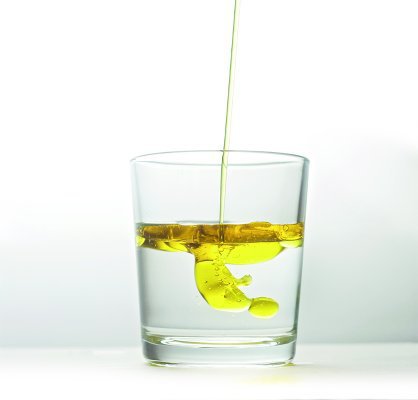The most popular physical/scientific experiment, which we approach when we start talking about physics for the first time, consists in combining water and olive oil and then being amazed by the result that this mixture creates. Well yes, water and extra virgin olive oil do not mix, on the contrary they form two clearly separate phases.
How is it possible? Why in their separation phase does the water always go to the bottom and the olive oil rises to the surface?
To answer this question, we refer to Archimedes’ principle, which states that: “A body immersed in a fluid receives an upward thrust equal to the weight of the volume of the displaced fluid”. This principle is the basis of the floating of ships, it is the principle that makes us feel lighter when we are completely immersed in water and, if the fluid is air, it is also the principle that makes helium balloons fly up into the sky.
In our case however, when talking about mixing water and oil, we are talking about a hydrostatic thrust of one liquid with respect to another; in fact, a liquid, in this example extra virgin olive oil, is placed above another, water, when it has a lower density.
Density: what is it and why do we talk about it?
In scientific terms, the density of a body is defined as “the ratio between its mass and the volume occupied by this mass”; essentially indicates how close the molecules of an object are to each other. In simple terms, the higher the density, the heavier an object is and will be attracted downwards by the force of gravity, for the same volume.

The density of extra virgin olive oil is lower than that of water, therefore the desired effect when the two liquids are mixed is that extra virgin olive oil, being lighter than water, tends to rise to the surface and stratify on of it, rather than underneath.
Immiscibility: two fluids that do not mix
The water molecule vaguely resembles a magnet, with two poles, one positive and one negative. These molecules are called polar, precisely because they have two opposite poles; but, there are also molecules that have no charge and are usually neutral, the latter called apolar, these are the molecules of extra virgin olive oil.
At this point it is easy to understand how the molecules of polar substances are unable or unable to create bonds with the molecules of non-polar substances, that is, they really do not mix.
Despite this, it is also useful to reiterate that similar substances, i.e. polar with polar and apolar with apolar, are able to mix; a sentence that summarizes everything could be: similar dissolves similar.
Therefore, since water and extra virgin olive oil are part of two opposing sides, it is clear why, once mixed together, they will never unite into a single homogeneous liquid but we, novice scientists, will always be able to distinguish where is the extra virgin olive oil and where is the water.
Density experiments to do at home
The material needed is easy to find, excellent for doing at home, on boring afternoons when you are looking for that spark of mystery and fun that only physics can provide.
We will therefore need:
• 2 identical glasses
• waterfall
• extra virgin olive oil
• 1 sheet of plastic (thin and resistant)
The steps to implement this physical experiment are few and simple:
1. fill the two glasses, one with water and one with extra virgin olive oil, both to the brim
2. place the plastic sheet on the glass with water, making sure that the water touches the plastic
3. keeping the plastic sheet firmly attached to the glass, turn the glass upside down (to which the sheet will remain attached) and place it precisely on the glass full of olive oil
4. carefully remove the paper and watch the oil flow into the glass above and the water into the glass below
In addition to noticing how the water descends downwards and the extra virgin olive oil rises to the surface, upwards, also pay attention to the fact that the two liquids do not mix with each other but, instead, remain clearly separated, a proof of what is explained in the following article.